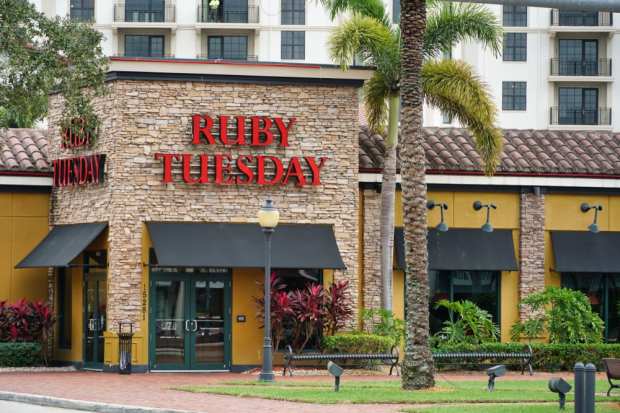Ruby Tuesday Files For Bankruptcy, Will Close 185 Locations

Struggling casual dining chain Ruby Tuesday is filing for Chapter 11 bankruptcy protection, the restaurant announced on Wednesday (Oct. 7). Under the reorganization, the company said it plans to close 185 locations, which leaves the franchise with 236 operating restaurants.
“This announcement does not mean ‘Goodbye, Ruby Tuesday’ but ‘Hello, to a stronger Ruby Tuesday’,” CEO Shawn Lederman said in a statement on the company’s website.
Ruby Tuesday was among the casual restaurant chains that were already struggling before the pandemic hit in March, according to reports. This latest announcement follows a private-equity buyout in 2017 by NRD Capital Management.
The company said it expects to stay afloat, and that it has “reached an understanding with its secured lenders to support its restructuring.”
Founded in 1972 and headquartered in Maryville, Tennessee, Ruby Tuesday has furloughed about 7,000 of its roughly 7,300 employees. When NRD Capital Management bought the chain for roughly $335 million, the franchise was already struggling but had more than 500 restaurants in operation.
“We plan to use this filing to strengthen our business by reducing liabilities and repositioning the company to emerge a stronger organization built for the future. We intend to move through the process as quickly as possible,” Lederman said.
He further added that the chain is still open for business as usual, including dining rooms, curbside pickup, delivery and catering. “Your Ruby Tuesday gift cards and So Connected rewards will continue to be valid and retain their values,” he noted.
Lederman said in court filings that Ruby Tuesday has felt the impact of increased competition from fast-food and fast-casual eateries and the decline in traffic at shopping malls, where many of its restaurants are located.
The pandemic has upended the restaurant industry, as QSRs and fast-food players have tried to stay afloat with drive-thru windows, curbside pickup and delivery options. Digitally enabled ordering has also helped to make a difference.
